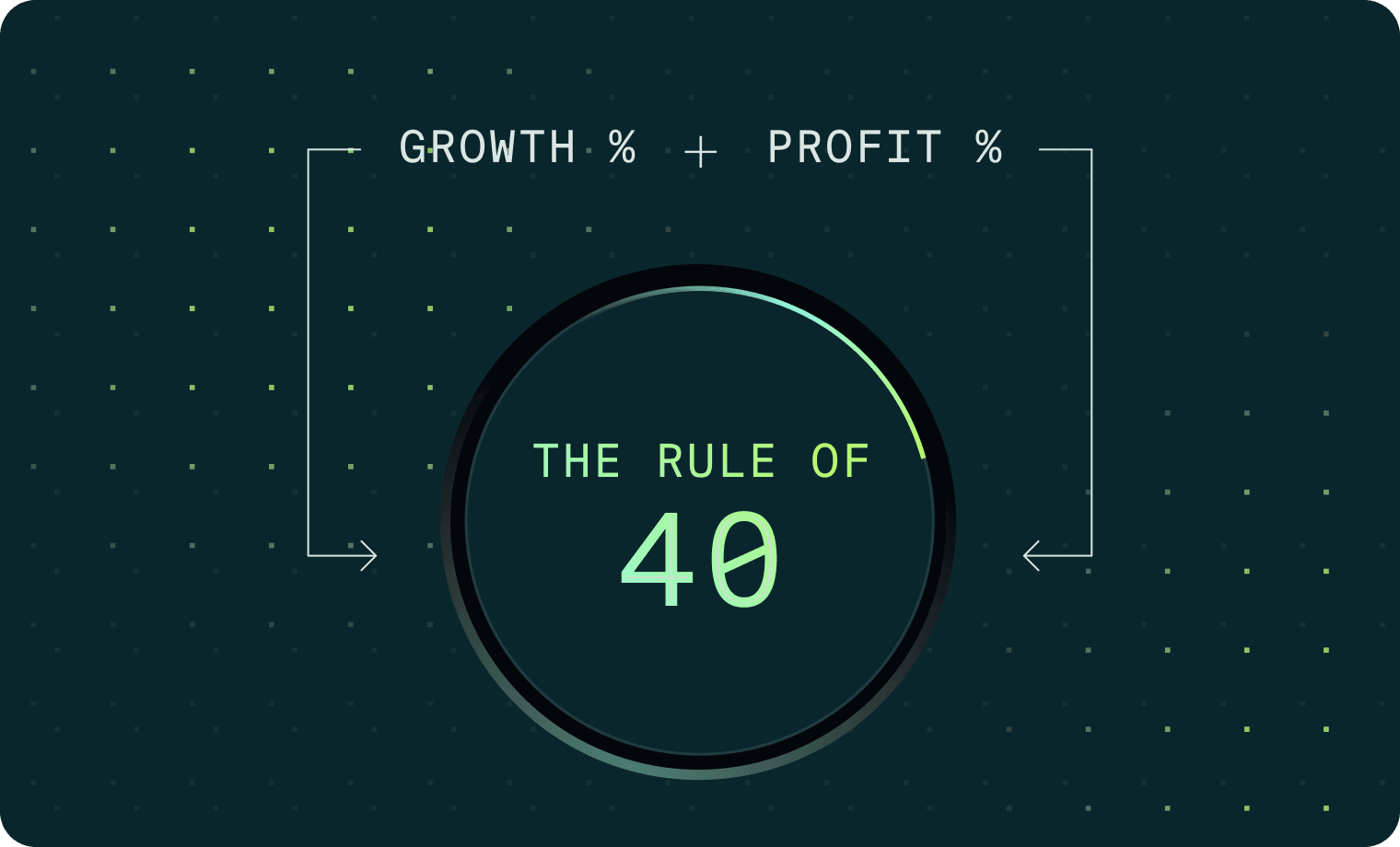
How to Calculate the Rule of 40 in SaaS Correctly

The Rule of 40 has been a big deal in tech for almost a decade, ever since Techstars’ Brad Feld mentioned it in a blog post as something he’d heard and liked from a late stage investor. Despite its ubiquity, many people don’t understand the Rule of 40 in SaaS properly because although it sounds simple, the real value is in the details.
What is the Rule of 40, and How Do You Calculate it Correctly?
Essentially, the Rule of 40 is a rule of thumb that lets an investor quickly calculate the health of a company. It’s used especially in the context of SaaS companies.
As Brad Feld put it back in 2015, “The 40% rule is that your growth rate + your profit should add up to 40%. So, if you are growing at 20%, you should be generating a profit of 20%. If you are growing at 40%, you should be generating a 0% profit. If you are growing at 50%, you can lose 10%. If you are doing better than the 40% rule, that’s awesome.”
Why the Rule of 40 Matters: The Growth/Profit Tradeoff
The reason the Rule of 40 resonates so strongly is that it highlights, and leverages, a fundamental business truth that is too easily overlooked: that most businesses do not achieve high growth and high profits at the same time. There’s a tradeoff to be made.
For instance, if you’re investing a lot in sales and marketing campaigns to bring in new business, that’s often a great (and necessary) strategy. If those campaigns are successful, you’ll have high growth. But because of what you’re spending to achieve it, you won’t have high margins.
The opposite is true as well. You may have great profit margins and cash flow, at the expense of investing in new business. That might be the right call for your business at this time. Low growth, high profit margins. There’s no right answer here.
What does matter is that companies are transparent with themselves, shareholders and investors about where they fall on that tradeoff, and where they’re aiming to be. Grow fast? Or focus on growing profits? As markets have changed, understanding this tradeoff through the Rule of 40 has become even more relevant.
Platforms like Firmbase’s that gather all the financial information from diverse data sources into one centralized FP&A workspace and analyze the real time picture of the business performance help organizations to be confident in not only how healthy their business is looking financially, but also what kind of health it is.
How to Calculate the Rule of 40 in SaaS Correctly
Brad Feld’s original calculation hasn’t been fundamentally improved on in a decade, because it’s easy to understand and to implement. If it’s not broken, don’t fix it. Use it.
What is important, though, is to understand the details of when to use it and what you’re calculating. Here are some important things to bear in mind:
-
Scale. The Rule of 40 is for SaaS companies that are already operating at scale. Say with at least $50 million in revenue. If you’re at Seed stage, this probably isn’t for you yet – though it’s still worth bearing in mind as you think about your growth and profit margin goals.
-
Time. The Rule of 40 in SaaS needs to be used looking at a reasonable period of time. What the most appropriate period might be varies from SaaS company to SaaS company, though a year is common. Looking at any single month is not advisable, though, because months legitimately vary. A huge marketing investment one month, or an unusually large payment made to suppliers, would skew this result in a way that doesn’t reflect the business as a whole, for example.
-
Growth. Usually, for SaaS companies, growth is recurring revenue, as a natural reflection of pricing and business model and as a reflection of predictability, though some companies do use total revenue. Again, there’s no right answer, but you should be able to transparently explain your choice to an investor.
-
Profit. There are more options available for what you consider as profit for the Rule of 40. You might go with operating income, net income, cash flow, EBITDA, etc. EBITDA is the most common, simply because it is the cleanest way to try to show a level playing field in which companies can be sensibly compared. If you have reasons to say that’s not a fit for your business, that may well be legitimate. Just be prepared to explain.
With the Rule of 40, the great benefit of all these elements is to encourage companies to be thoughtful and self-reflective about what they’re calculating, why, and what that says about the health of their business.
Talking through the Rule of 40 can be a helpful framework to show that your financial team and leadership are making data-driven, strategic decisions based on a holistic understanding of the company’s financial reality. It shows you know the current financial state and its nuances, and also that you can use that to plan effectively for the future – whether that includes more of a focus on growth, or on profit.
Learn more about how Firmbase improves data-driven, dynamic financial forecasts, including the Rule of 40. Book a demo today.
test Demo



